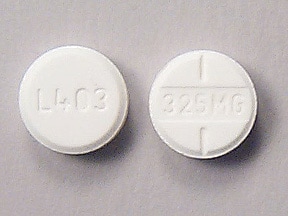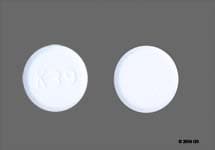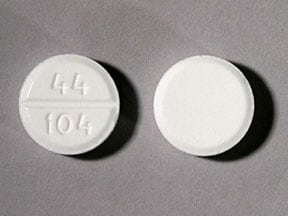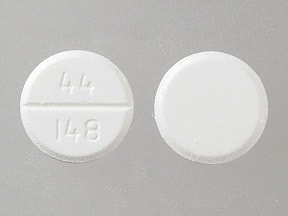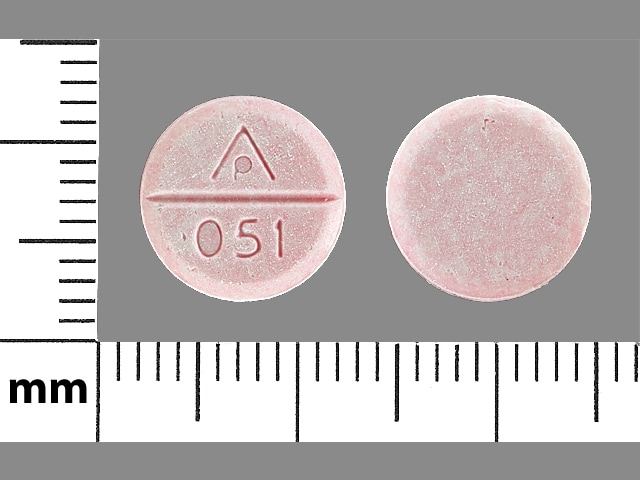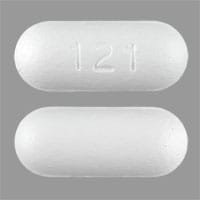Boxed Warning
Risk of medication errors and hepatotoxicity (injection):
Take care when prescribing, preparing, and administering acetaminophen injection to avoid dosing errors that could result in accidental overdose and death. In particular, be careful to ensure the following: the dose in milligrams and milliliters is not confused; the dosing is based on weight for patients less than 50 kg; infusion pumps are properly programmed; and the total daily dose of acetaminophen from all sources does not exceed maximum daily limits.
Acetaminophen has been associated with cases of acute liver failure, at times resulting in liver transplant and death. Most of the cases of liver injury are associated with the use of acetaminophen at doses that exceed the maximum daily limits, and often involve more than 1 acetaminophen-containing product.
Dosage Forms
Excipient information presented when available (limited, particularly for generics); consult specific product labeling. [DSC] = Discontinued product
Caplet, oral: 500 mg
Cetafen Extra: 500 mg
Mapap Extra Strength: 500 mg
Mapap Extra Strength: 500 mg [scored]
Pain Eze: 650 mg
Tylenol: 325 mg
Tylenol Extra Strength: 500 mg
Caplet, extended release, oral:
Mapap Arthritis Pain: 650 mg
Midol Long Lasting Relief: 650 mg
Tylenol 8 HR Arthritis Pain: 650 mg
Capsule, oral:
Mapap Extra Strength: 500 mg
Tylenol: 325 mg
Tylenol Extra Strength: 500 mg
Injection, solution [preservative free]:
Ofirmev: 10 mg/mL (100 mL)
Liquid, oral: 160 mg/5 mL (120 mL, 473 mL)
Q-Pap Children's: 160 mg/5 mL (118 mL [DSC], 473 mL [DSC]) [ethanol free; contains propylene glycol, sodium 2 mg/5 mL, sodium benzoate; cherry flavor, grape flavor]
Silapap Children's: 160 mg/5 mL (118 mL, 237 mL, 473 mL) [ethanol free, sugar free; contains propylene glycol, sodium benzoate; cherry flavor]
Solution, oral: 160 mg/5 mL (5 mL, 10 mL, 20 mL); 325 mg/10.15 mL (10.15 mL); 650 mg/20.3 mL (20.3 mL)
Pain & Fever Children's: 160 mg/5 mL (118 mL [DSC], 473 mL [DSC]) [ethanol free, sugar free; contains propylene glycol, sodium 1 mg/5 mL, sodium benzoate; cherry flavor]
Solution, oral [drops]: 80 mg/0.8 mL (15 mL [DSC])
Little Fevers: 80 mg/mL (30 mL [DSC]) [dye free, ethanol free, gluten free; contains propylene glycol, sodium benzoate; berry flavor]
Q-Pap Infants': 80 mg/0.8 mL (15 mL [DSC]) [ethanol free; contains propylene glycol; fruit flavor]
Suppository, rectal: 120 mg (12s); 325 mg (12s); 650 mg (12s)
Acephen: 120 mg (12s, 50s, 100s); 325 mg (6s, 12s, 50s, 100s); 650 mg (12s, 50s, 100s)
FeverAll Adults: 650 mg (50s)
FeverAll Children's: 120 mg (6s, 50s)
FeverAll Infants': 80 mg (6s, 50s)
FeverAll Junior Strength: 325 mg (6s, 50s)
Suspension, oral: 160 mg/5 mL (5 mL, 10.15 mL, 20.3 mL)
Mapap Children's: 160 mg/5 mL (118 mL) [ethanol free; contains propylene glycol, sodium benzoate; cherry flavor]
Nortemp Children's: 160 mg/5 mL (118 mL) [ethanol free; contains propylene glycol, sodium benzoate; cotton candy flavor]
Pain & Fever Children's: 160 mg/5 mL (60 mL) [ethanol free; contains propylene glycol, sodium benzoate; cherry flavor]
Q-Pap Children's: 160 mg/5 mL (118 mL [DSC]) [ethanol free; contains sodium 2 mg/5 mL, sodium benzoate; bubblegum flavor, cherry flavor, grape flavor]
Tylenol Children's: 160 mg/5 mL (120 mL) [dye free, ethanol free; contains propylene glycol, sodium benzoate; cherry flavor]
Tylenol Children's: 160 mg/5 mL (120 mL) [ethanol free; contains propylene glycol, sodium 2 mg/5 mL, sodium benzoate; bubblegum flavor]
Tylenol Children's: 160 mg/5 mL (60 mL, 120 mL) [ethanol free; contains propylene glycol, sodium 2 mg/5 mL, sodium benzoate; cherry flavor]
Tylenol Children's: 160 mg/5 mL (120 mL) [ethanol free; contains propylene glycol, sodium 2 mg/5 mL, sodium benzoate; grape flavor]
Tylenol Children's: 160 mg/5 mL (120 mL) [ethanol free; contains propylene glycol, sodium 2 mg/5 mL, sodium benzoate; strawberry flavor]
Tylenol Infants': 160 mg/5 mL (60 mL) [ethanol free; contains propylene glycol, sodium benzoate; grape flavor]
Syrup, oral:
Triaminic Children's Fever Reducer Pain Reliever: 160 mg/5 mL (118 mL) [contains benzoic acid, sodium 6 mg/5 mL; bubblegum flavor]
Triaminic Children's Fever Reducer Pain Reliever: 160 mg/5 mL (118 mL) [contains sodium 5 mg/5 mL, sodium benzoate; grape flavor]
Tablet, oral: 325 mg, 500 mg
Aspirin Free Anacin Extra Strength: 500 mg
Cetafen: 325 mg
GoodSense Pain Relief Extra Strength: 500 mg
Mapap: 325 mg
Mapap Extra Strength: 500 mg
Non-Aspirin Pain Reliever: 325 mg
Pain Relief: 325 mg
Pain Relief Extra Strength: 500 mg
Pharbetol: 325 mg
Pharbetol Extra Strength: 500 mg
Q-Pap: 325 mg [scored] [DSC]
Q-Pap Extra Strength: 500 mg [scored] [DSC]
Tylenol: 325 mg
Tylenol Extra Strength: 500 mg
Valorin: 325 mg [sugar free]
Valorin Extra: 500 mg [sugar free]
Tablet, chewable, oral: 80 mg, 160 mg
Mapap Children's: 80 mg [fruit flavor]
Tablet, dispersible, oral: 80 mg, 160 mg
Mapap Children's: 80 mg [bubblegum flavor] [DSC]
Mapap Children's: 80 mg [grape flavor]
Tablet, extended release, oral: 650 mg
Pharmacology
Mechanism of Action
Although not fully elucidated, the analgesic effects are believed to be due to activation of descending serotonergic inhibitory pathways in the CNS. Interactions with other nociceptive systems may be involved as well (Smith 2009). Antipyresis is produced from inhibition of the hypothalamic heat-regulating center.
Pharmacokinetics/Pharmacodynamics
Absorption
Primarily absorbed in small intestine (rate of absorption dependent upon gastric emptying); minimal absorption from stomach; varies by dosage form
Distribution
~1 L/kg at therapeutic doses
Metabolism
At normal therapeutic dosages, primarily hepatic metabolism to sulfate and glucuronide conjugates, while a small amount is metabolized by CYP2E1 to a highly reactive intermediate, N-acetyl-p-benzoquinone imine (NAPQI), which is conjugated rapidly with glutathione and inactivated to nontoxic cysteine and mercapturic acid conjugates. At toxic doses (as little as 4 g daily) glutathione conjugation becomes insufficient to meet the metabolic demand causing an increase in NAPQI concentrations, which may cause hepatic cell necrosis. Oral administration is subject to first pass metabolism.
Excretion
Urine (<5% unchanged; 60% to 80% as glucuronide metabolites; 20% to 30% as sulphate metabolites; ~8% cysteine and mercapturic acid metabolites)
Onset of Action
Oral: <1 hour
IV: Analgesia: 5 to 10 minutes; Antipyretic: Within 30 minutes
Peak effect: IV: Analgesic: 1 hour
Time to Peak
Serum: Oral: Immediate release: 10 to 60 minutes (may be delayed in acute overdoses); IV: 15 minutes
Duration of Action
IV, Oral: Analgesia: 4 to 6 hours
IV: Antipyretic: ≥6 hours
Half-Life Elimination
Prolonged following toxic doses
Neonates: 7 hours (range: 4 to 10 hours)
Infants: ~4 hours (range: 1 to 7 hours)
Children: 3 hours (range: 2 to 5 hours)
Adolescents: ~3 hours (range: 2 to 4 hours)
Adults: ~2 hours (range: 2 to 3 hours); may be slightly prolonged in severe renal insufficiency (CrCl <30 mL/minute): 2 to 5.3 hours
Protein Binding
10% to 25% at therapeutic concentrations; 8% to 43% at toxic concentrations
Use in Specific Populations
Special Populations: Hepatic Function Impairment
The half-life may increase 2-fold or more in patients with liver disease.
Use: Labeled Indications
Fever: Temporary reduction of fever.
Pain:
Injection: Management of mild to moderate pain in patients ≥2 years of age; management of moderate to severe pain when combined with opioid analgesia in patients ≥2 years.
Oral, Rectal: Temporary relief of minor aches, pains, and headache.
Contraindications
Injection: Hypersensitivity to acetaminophen or any component of the formulation; severe hepatic impairment or severe active liver disease
OTC labeling: When used for self-medication, do not use with other drug products containing acetaminophen or if allergic to acetaminophen or any of the inactive ingredients
Dosage and Administration
Dosing: Adult
Note: Safety: Acetaminophen-induced hepatotoxicity, which can be life threatening, has been associated with doses >4 g/day. Although doses up to 4 g/day are generally well tolerated (Dart 2007; Krenzelok 2012; Larson 2007; Temple 2006; Whitcomb 1994), hepatotoxicity has been reported rarely at this dose limit (Amar 2007). Due to this risk, some experts recommend a lower maximum dose of 3 g/day in adults with normal liver function, particularly when used for longer durations (eg, >7 days) for pain (Chou 2019). Heavy alcohol use, malnutrition, fasting, low body weight, advanced age, febrile illness, select liver disease, and use of drugs that interact with acetaminophen metabolism may increase risk of hepatotoxicity; a lower total daily dose (eg, 2 g/day) or avoidance may be preferred (Hamilton 2019b; Hayward 2016; Larson 2007). When calculating total daily dose, confirm that all sources (eg, prescription, OTCs, combinations) are included.
Pain (mild to moderate) and/or fever (monotherapy or as an adjunct):
Oral: 325 to 650 mg every 4 to 6 hours as needed or 1 g every 6 hours as needed; maximum dose: 4 g/day (Amar 2007; APS 2016). See "Note: Safety" above regarding maximum dose.
OTC labeling (patient-guided therapy): Note: Dosage recommendations, including maximum doses, vary among OTC manufacturers.
Immediate release:
Regular strength (325 mg/tablet): 2 tablets (650 mg) every 4 to 6 hours as needed; maximum daily dose: 10 tablets/day (3.25 g/day).
Extra strength (500 mg/tablet): 2 tablets (1 g) every 6 hours as needed; maximum daily dose: 6 tablets/day (3 g/day).
Extended release (650 mg/tablet): 2 tablets (1.3 g) every 8 hours as needed; maximum daily dose: 6 tablets/day (3.9 g/day).
IV:
≥50 kg: 650 mg every 4 hours or 1 g every 6 hours; maximum single dose: 1 g/dose; maximum daily dose: 4 g/day.
<50 kg: 12.5 mg/kg every 4 hours or 15 mg/kg every 6 hours; maximum single dose: 15 mg/kg/dose (≤750 mg/dose); maximum daily dose: 75 mg/kg/day (≤3.75 g/day). Note: Some experts recommend this reduced dosing if used in patients with chronic alcoholism, malnutrition, or dehydration regardless of weight (Mariano 2019).
Rectal: 325 to 650 mg every 4 to 6 hours as needed (Pandharipande 2019); maximum daily dose: 3.9 g/day. Note: Absorption is irregular; bioavailability may be reduced by ~10% to 20% relative to oral administration (Bannwarth 2003).
Dosing: Geriatric
Pain (acute) or fever: Oral, IV: Refer to adult dosing.
Persistent pain (off-label): Adults ≥75 years: Oral:
Initial: 325 to 500 mg every 4 hours or 500 to 1,000 mg every 6 hours
Maximum: ≤4,000 mg/day. In older adults with hepatic impairment or history of alcohol abuse being treated for persistent pain, do not exceed a maximum of 2,000 to 3,000 mg/day (AGS 2009)
Dosing: Pediatric
Note: Oral liquids are available in multiple concentrations (eg, 160 mg/5 mL, 500 mg/5 mL, 500 mg/15 mL); precautions should be taken to verify and avoid confusion between the different concentrations; dose should be clearly presented as "mg."
Pain (mild to moderate) or fever: Note: All sources of acetaminophen (eg, prescription, OTC, combination products) should be considered when evaluating a patient's maximum daily dose. To lower the risk for hepatotoxicity, limit daily dose to ≤75 mg/kg/day (maximum of 5 daily doses), not to exceed 4,000 mg/day; while recommended doses are generally considered safe, hepatotoxicity has been reported (rarely) even with doses below recommendations (AAP [Sullivan 2011]; Heard 2014; Lavonas 2010).
Oral:
Weight-directed dosing: Infants, Children, and Adolescents: 10 to 15 mg/kg/dose every 4 to 6 hours as needed (American Pain Society 2008; Kliegman 2011; AAP [Sullivan 2011]); do not exceed 5 doses in 24 hours; maximum daily dose: 75 mg/kg/day not to exceed 4,000 mg/day.
Fixed dosing:
Oral suspension, chewable tablets: Infants and Children <12 years: Consult specific product formulations for appropriate age groups. See table; use of weight to select dose is preferred; if weight is not available, then use age; doses may be repeated every 4 hours; maximum: 5 doses/day.
|
Weight (preferred)A |
Age |
Dosage (mg) |
|
|---|---|---|---|
|
kg |
lbs |
||
|
AManufacturer’s recommendations are based on weight in pounds (OTC labeling); weight in kg listed here is derived from pounds and rounded; kg weight listed also is adjusted to allow for continuous weight ranges in kg. OTC labeling instructs consumer to consult with physician for dosing instructions in infants and children under 2 years of age. |
|||
|
2.7 to 5.3 |
6 to 11 |
0 to 3 mo |
40 |
|
5.4 to 8.1 |
12 to 17 |
4 to 11 mo |
80 |
|
8.2 to 10.8 |
18 to 23 |
1 to 2 y |
120 |
|
10.9 to 16.3 |
24 to 35 |
2 to 3 y |
160 |
|
16.4 to 21.7 |
36 to 47 |
4 to 5 y |
240 |
|
21.8 to 27.2 |
48 to 59 |
6 to 8 y |
320 to 325 |
|
27.3 to 32.6 |
60 to 71 |
9 to 10 y |
325 to 400 |
|
32.7 to 43.2 |
72 to 95 |
11 y |
480 to 500 |
Table has been converted to the following text.
Acetaminophen Dosing (Oral):
Weight (preferred)A 2.7 to 5.3 kg (6 to 11 lbs) or 0 to 3 months: 40 mg
Weight (preferred)A 5.4 to 8.1 kg (12 to 17 lbs) or 4 to 11 months: 80 mg
Weight (preferred)A 8.2 to 10.8 kg (18 to 23 lbs) or 1 to 2 years: 120 mg
Weight (preferred)A 10.9 to 16.3 kg (24 to 35 lbs) or 2 to 3 years: 160 mg
Weight (preferred)A 16.4 to 21.7 kg (36 to 47 lbs) or 4 to 5 years: 240 mg
Weight (preferred)A 21.8 to 27.2 kg (48 to 59 lbs) or 6 to 8 years: 320 to 325 mg
Weight (preferred)A 27.3 to 32.6 kg (60 to 71 lbs) or 9 to 10 years: 325 to 400 mg
Weight (preferred)A 32.7 to 43.2 kg (72 to 95 lbs) or 11 years: 480 to 500 mg
AManufacturer’s recommendations are based on weight in pounds (OTC labeling); weight in kg listed here is derived from pounds and rounded; kg weight listed also is adjusted to allow for continuous weight ranges in kg. OTC labeling instructs consumer to consult with physician for dosing instructions in infants and children under 2 years of age.
Immediate-release solid dosage formulations: Note: Actual OTC dosing recommendations may vary by product and/or manufacturer:
Children 6 to 11 years: 325 mg every 4 to 6 hours; maximum daily dose: 1,625 mg/day; Note: Do not use more than 5 days unless directed by a physician.
Children ≥12 years and Adolescents:
Regular strength: 650 mg every 4 to 6 hours; maximum daily dose: 3,250 mg/day unless directed by a physician; under physician supervision daily doses ≤4,000 mg may be used.
Extra strength: 1,000 mg every 6 hours; maximum daily dose: 3,000 mg/day unless directed by a physician; under physician supervision daily doses ≤4,000 mg may be used.
Extended release: Children ≥12 years and Adolescents: 1,300 mg every 8 hours; maximum daily dose: 3,900 mg/day.
IV:
Infants and Children <2 years:
Manufacturer’s labeling: Fever: 15 mg/kg/dose every 6 hours; maximum daily dose: 60 mg/kg/day.
Alternate dosing: Limited data available: Pain and fever: 7.5 to 15 mg/kg/dose every 6 hours; maximum daily dose: 60 mg/kg/day (Wilson-Smith 2009).
Children ≥2 years and Adolescents:
<50 kg: 15 mg/kg/dose every 6 hours or 12.5 mg/kg/dose every 4 hours; maximum single dose: 15 mg/kg up to 750 mg; maximum daily dose: 75 mg/kg/day not to exceed 3,750 mg/day.
≥50 kg: 1,000 mg every 6 hours or 650 mg every 4 hours; maximum single dose: 1,000 mg; maximum daily dose: 4,000 mg/day.
Rectal:
Weight-directed dosing: Limited data available: Infants and Children <12 years: 10 to 20 mg/kg/dose every 4 to 6 hours as needed; do not exceed 5 doses in 24 hours (Kliegman 2011; Vernon 1979); maximum daily dose: 75 mg/kg/day.
Fixed dosing:
Infants 6 to 11 months: 80 mg every 6 hours; maximum daily dose: 320 mg/day.
Infants and Children 12 to 36 months: 80 mg every 4 to 6 hours; maximum daily dose: 400 mg/day.
Children >3 to 6 years: 120 mg every 4 to 6 hours; maximum daily dose: 600 mg/day.
Children >6 up to 12 years: 325 mg every 4 to 6 hours; maximum daily dose: 1,625 mg/day.
Children ≥12 years and Adolescents: 650 mg every 4 to 6 hours; maximum daily dose: 3,900 mg/day.
Pain; peri-/postoperative management; adjunct to opioid therapy:
IV:
Infants and Children <2 years: Limited data available: 7.5 to 15 mg/kg/dose every 6 hours; maximum daily dose: 60 mg/kg/day (Wilson-Smith 2009).
Children ≥2 years and Adolescents:
<50 kg: 15 mg/kg/dose every 6 hours or 12.5 mg/kg/dose every 4 hours; maximum single dose: 15 mg/kg up to 750 mg; maximum daily dose: 75 mg/kg/day not to exceed 3,750 mg/day.
≥50 kg: 1,000 mg every 6 hours or 650 mg every 4 hours; maximum single dose: 1,000 mg; maximum daily dose: 4,000 mg/day.
Rectal: Limited data available: Children and Adolescents:
Loading dose: 40 mg/kg for 1 dose, in most trials, the dose was administered postoperatively (Birmingham 2001; Capici 2008; Hahn 2000; Mireskandari 2011; Prins 2008; Riad 2007; Viitanen 2003); a maximum dose of 1,000 mg was most frequently reported. However, in one trial evaluating 24 older pediatric patients (all patients ≥25 kg; mean age: ~13 years), the data suggested that a dose of 1,000 mg does not produce therapeutic serum concentrations (target for study: >10 mcg/mL) compared to a 40 mg/kg dose (up to ~2,000 mg); the resultant Cmax was: 7.8 mcg/mL (1,000 mg dose group) vs 15.9 mcg/mL (40 mg/kg dose group). Note: Therapeutic serum concentrations for analgesia have not been well-established (Howell 2003).
Maintenance dose: 20 to 25 mg/kg/dose every 6 hours as needed for 2 to 3 days has been suggested if further pain control is needed postoperatively; maximum daily dose: 100 mg/kg/day; therapy longer than 5 days has not been evaluated (Birmingham 2001; Hahn 2000; Prins 2008).
Note: In the majority of trials, suppositories were not divided due to unequal distribution of drug within suppository; doses were rounded to the nearest mg amount using 1 or 2 suppositories of available product strengths.
Reconstitution
Injectable solution may be administered without further dilution.
Doses <1,000 mg (<50 kg): Withdraw appropriate dose and transfer to a separate sterile container (eg, glass bottle, plastic IV container, syringe) for administration.
Doses of 1,000 mg (≥50 kg): Insert a vented IV set through vial stopper or a non-vented IV set through the administration spike port of the bag.
Administration
Oral: May administer without regard to food; may administer with food to decrease possible GI upset; shake drops and suspension well before use; do not crush or chew extended release products
Injection: For IV infusion only. Administer undiluted over 15 minutes.
For doses <1,000 mg (<50 kg): Withdraw appropriate dose and place into separate empty, sterile container (eg, glass bottle, plastic IV container, syringe) for administration.
For 1,000 mg doses (≥50 kg): Insert a vented IV set through vial stopper or a non-vented IV set through the administration spike port of the bag.
Rectal: Remove wrapper; insert suppository well up into the rectum.
Dietary Considerations
Some products may contain phenylalanine and/or sodium.
Storage
Injection: Store intact vials and bags at 20°C to 25°C (68°F to 77°F); do not refrigerate or freeze. Use within 6 hours of penetrating vial/bag or transferring to another container. Discard any unused portion.
Oral formulations: Store at 20°C to 25°C (68°F to 77°F); avoid excessive heat (40°C [104°F]). Avoid high humidity (chewable tablets).
Suppositories: Store at 2°C to 27°C (25°F to 80°F); do not freeze.
Acetaminophen Images
Drug Interactions
Alcohol (Ethyl): May enhance the hepatotoxic effect of Acetaminophen. Monitor therapy
Barbiturates: May increase the metabolism of Acetaminophen. This may 1) diminish the effect of acetaminophen; and 2) increase the risk of liver damage. Exceptions: Amobarbital; Butabarbital; Butalbital; Methohexital; PENTobarbital; Secobarbital; Thiopental. Monitor therapy
Busulfan: Acetaminophen may increase the serum concentration of Busulfan. Monitor therapy
CarBAMazepine: May increase the metabolism of Acetaminophen. This may 1) diminish the effect of acetaminophen; and 2) increase the risk of liver damage. Monitor therapy
Dapsone (Topical): May enhance the adverse/toxic effect of Methemoglobinemia Associated Agents. Monitor therapy
Dasatinib: Acetaminophen may enhance the hepatotoxic effect of Dasatinib. Dasatinib may increase the serum concentration of Acetaminophen. Consider therapy modification
Flucloxacillin: May enhance the adverse/toxic effect of Acetaminophen. Specifically, the risk for high anion gap metabolic acidosis may be increased. Monitor therapy
Fosphenytoin-Phenytoin: May decrease the serum concentration of Acetaminophen. Specifically, serum concentrations of acetaminophen may be decreased (leading to decreased efficacy), but the formation of the toxic N-acetyl-p-benzoquinone imine (NAPQI) metabolite may be increased (leading to increased hepatotoxicity). Monitor therapy
Imatinib: Acetaminophen may enhance the hepatotoxic effect of Imatinib. Monitor therapy
Isoniazid: May enhance the adverse/toxic effect of Acetaminophen. Monitor therapy
LamoTRIgine: Acetaminophen may decrease the serum concentration of LamoTRIgine. Monitor therapy
Local Anesthetics: Methemoglobinemia Associated Agents may enhance the adverse/toxic effect of Local Anesthetics. Specifically, the risk for methemoglobinemia may be increased. Monitor therapy
MetyraPONE: May increase the serum concentration of Acetaminophen. More importantly, by inhibiting the conjugative metabolism of acetaminophen, metyrapone may shift the metabolism towards the oxidative route that produces a hepatotoxic metabolite. Monitor therapy
Mipomersen: Acetaminophen may enhance the hepatotoxic effect of Mipomersen. Monitor therapy
Nitric Oxide: May enhance the adverse/toxic effect of Methemoglobinemia Associated Agents. Combinations of these agents may increase the likelihood of significant methemoglobinemia. Monitor therapy
Phenylephrine (Systemic): Acetaminophen may increase the serum concentration of Phenylephrine (Systemic). Monitor therapy
Prilocaine: Methemoglobinemia Associated Agents may enhance the adverse/toxic effect of Prilocaine. Combinations of these agents may increase the likelihood of significant methemoglobinemia. Management: Monitor patients for signs of methemoglobinemia (e.g., hypoxia, cyanosis) when prilocaine is used in combination with other agents associated with development of methemoglobinemia. Avoid lidocaine/prilocaine in infants receiving such agents. Monitor therapy
Probenecid: May increase the serum concentration of Acetaminophen. Probenecid may also limit the formation of at least one major non-toxic metabolite, possibly increasing the potential for formation of the toxic NAPQI metabolite. Consider therapy modification
Sodium Nitrite: Methemoglobinemia Associated Agents may enhance the adverse/toxic effect of Sodium Nitrite. Combinations of these agents may increase the likelihood of significant methemoglobinemia. Monitor therapy
SORAfenib: Acetaminophen may enhance the hepatotoxic effect of SORAfenib. SORAfenib may increase the serum concentration of Acetaminophen. Consider therapy modification
Vitamin K Antagonists (eg, warfarin): Acetaminophen may enhance the anticoagulant effect of Vitamin K Antagonists. This appears most likely with daily acetaminophen doses exceeding 1.3 or 2 g/day for multiple consecutive days. Monitor therapy
Test Interactions
Acetaminophen may cause false-positive urinary 5-hydroxyindoleacetic acid.
Adverse Reactions
Oral, Rectal: Frequency not defined:
Dermatologic: Skin rash
Endocrine & metabolic: Decreased serum bicarbonate, decreased serum calcium, decreased serum sodium, hyperchloremia, hyperuricemia, increased serum glucose
Genitourinary: Nephrotoxicity (with chronic overdose)
Hematologic & oncologic: Anemia, leukopenia, neutropenia, pancytopenia
Hepatic: Increased serum alkaline phosphatase, increased serum bilirubin
Hypersensitivity: Hypersensitivity reaction (rare)
Renal: Hyperammonemia, renal disease (analgesic)
IV:
>10%: Gastrointestinal: Nausea (adults: 34%; neonates, infants, children, and adolescents: ≥5%), vomiting (adults: 15%; neonates, infants, children, and adolescents: ≥5%)
1% to 10%:
Cardiovascular: Hypertension (≥1%), hypotension (≥1%), peripheral edema (adults: ≥1%), tachycardia
Central nervous system: Headache (adults: 10%; neonates, infants, children, and adolescents: ≥1%), insomnia (adults: 7%), agitation (neonates, infants, children, and adolescents: ≥1%), anxiety (adults: ≥1%), fatigue (adults: ≥1%), trismus (adults: ≥1%)
Dermatologic: Pruritus (neonates, infants, children, and adolescents: ≥5%), skin rash
Endocrine & metabolic: Hypoalbuminemia (neonates, infants, children, and adolescents: ≥1%), hypokalemia (≥1%), hypomagnesemia (neonates, infants, children, and adolescents: ≥1%), hypophosphatemia (neonates, infants, children, and adolescents: ≥1%), hypervolemia
Gastrointestinal: Constipation (neonates, infants, children, and adolescents: ≥5%), diarrhea (neonates, infants, children, and adolescents: ≥1%), abdominal pain
Genitourinary: Oliguria (neonates, infants, children, and adolescents: ≥1%)
Hematologic & oncologic: Anemia (≥1%)
Hepatic: Increased serum transaminases
Local: Pain at injection site (≥1%)
Neuromuscular & skeletal: Limb pain, muscle spasm (≥1%)
Ophthalmic: Periorbital edema
Respiratory: Abnormal breath sounds (adults: ≥1%), atelectasis (neonates, infants, children, and adolescents: ≥1%), dyspnea (adults: ≥1%), hypoxia, pleural effusion (neonates, infants, children, and adolescents: ≥1%), pulmonary edema (neonates, infants, children, and adolescents: ≥1%), stridor (adults: ≥1%), wheezing (adults: ≥1%)
Miscellaneous: Fever (neonates, infants, children, and adolescents: ≥1%)
All formulations: <1%, postmarketing, and/or case reports: Anaphylaxis, hypersensitivity reaction
Warnings/Precautions
Concerns related to adverse effects:
- Hepatotoxicity: Injection: [US Boxed Warning]. Acetaminophen has been associated with acute liver failure, at times resulting in liver transplant and death. Hepatotoxicity is usually associated with excessive acetaminophen intake and often involves more than one product that contains acetaminophen. Do not exceed the maximum recommended daily dose (>4 g daily in adults). In addition, chronic daily dosing may also result in liver damage in some patients.
- Hypersensitivity/anaphylactic reactions: Hypersensitivity and anaphylactic reactions have been reported; discontinue immediately if symptoms of allergic or hypersensitivity reactions occur.
- Skin reactions: Serious and potentially fatal skin reactions, including acute generalized exanthematous pustulosis (AGEP), Stevens-Johnson syndrome (SJS), and toxic epidermal necrolysis (TEN) have occurred rarely with acetaminophen use. Discontinue therapy at the first appearance of skin rash.
Disease-related concerns:
- Ethanol use: Use with caution in patients with alcoholic liver disease; consuming ≥3 alcoholic drinks/day may increase the risk of liver damage.
- G6PD deficiency: Use with caution in patients with known G6PD deficiency.
- Hepatic impairment: Use with caution in patients with hepatic impairment or active liver disease; use of the IV formulation is contraindicated in patients with severe hepatic impairment or severe active liver disease.
- Hypovolemia: Use the IV formulation with caution in patients with severe hypovolemia (eg, due to dehydration or blood loss).
- Malnutrition: Use with caution in patients with chronic malnutrition.
- Renal impairment: Use with caution in patients with severe renal impairment; consider dosing adjustments.
Dosage form specific issues:
- Aspartame: Some products may contain aspartame, which is metabolized to phenylalanine and must be avoided (or used with caution) in patients with phenylketonuria.
- Benzyl alcohol and derivatives: Some dosage forms may contain benzyl alcohol and/or sodium benzoate/benzoic acid; benzoic acid (benzoate) is a metabolite of benzyl alcohol; large amounts of benzyl alcohol (≥99 mg/kg/day) have been associated with a potentially fatal toxicity (“gasping syndrome”) in neonates; the “gasping syndrome” consists of metabolic acidosis, respiratory distress, gasping respirations, CNS dysfunction (including convulsions, intracranial hemorrhage), hypotension and cardiovascular collapse (AAP ["Inactive" 1997]; CDC 1982); some data suggests that benzoate displaces bilirubin from protein binding sites (Ahlfors 2001); avoid or use dosage forms containing benzyl alcohol and/or benzyl alcohol derivative with caution in neonates. See manufacturer's labeling.
- Injection: [US Boxed Warning]: Take care to avoid dosing errors; ensure that the dose in mg is not confused with mL, dosing in patients <50 kg is based on body weight, infusion pumps are properly programmed, and total daily dose of acetaminophen from all sources does not exceed the maximum daily limits.
- Polysorbate 80: Some dosage forms may contain polysorbate 80 (also known as Tweens). Hypersensitivity reactions, usually a delayed reaction, have been reported following exposure to pharmaceutical products containing polysorbate 80 in certain individuals (Isaksson, 2002; Lucente 2000; Shelley, 1995). Thrombocytopenia, ascites, pulmonary deterioration, and renal and hepatic failure have been reported in premature neonates after receiving parenteral products containing polysorbate 80 (Alade, 1986; CDC, 1984). See manufacturer's labeling.
- Propylene glycol: Some dosage forms may contain propylene glycol; large amounts are potentially toxic and have been associated hyperosmolality, lactic acidosis, seizures and respiratory depression; use caution (AAP ["Inactive" 1997]; Zar, 2007).
Other warnings/precautions:
- Dosage limit: Limit acetaminophen dose from all sources (prescription, OTC, combination products) and all routes of administration (IV, oral, rectal) to <4 g/day (adults).
- Self-medication (OTC use): When used for self-medication, patients should be instructed to contact health care provider if symptoms get worse or new symptoms appear, redness or swelling is present in the painful area, fever lasts >3 days (all ages), or pain (excluding sore throat) lasts longer than: Children ≥12 years, Adolescents, and Adults: 10 days; Infants and Children <12 years: 5 days. When treating children with sore throat, if sore throat is severe, persists for >2 days, or is followed by fever, rash, headache, nausea, or vomiting, consult health care provider immediately.
Monitoring Parameters
Serum acetaminophen levels: Where acute overdose suspected and with long-term use in patients with hepatic disease; relief of pain or fever
Pregnancy
Pregnancy Considerations
Acetaminophen crosses the placenta (Naga Rani 1989).
Based on epidemiological data, an increased risk of major congenital malformations has not been observed following maternal use of acetaminophen during pregnancy. Although not considered a major birth defect, an association between maternal acetaminophen use and cryptorchidism (undescended testis) has been observed (Fisher 2016; Jensen 2010; Kristensen 2011; Snijder 2012). The use of acetaminophen in normal doses during pregnancy is not associated with an increased risk of miscarriage or still birth; however, an increase in fetal death or spontaneous abortion may be seen following maternal overdose if treatment is delayed (Li 2003; Rebordosa 2009; Riggs 1989). Prenatal constriction of the ductus arteriosus has been noted in case reports following maternal use during the third trimester (Allegaert 2019); although this association was not confirmed in a large observational study (Dathe 2019), acetaminophen has been evaluated for the treatment of a persistent patent ductus arteriosus in preterm neonates (Terrin 2016). Additional adverse events such as wheezing and asthma in early childhood and adverse neurodevelopmental effects such as ADHD following in utero acetaminophen exposure have been evaluated in multiple studies; outcome information is inconclusive, and a causal association has not been established (Cheelo 2014; Fan 2017; Lourido-Cebreiro 2017; Scialli 2010; SMFM 2017). It should be noted that maternal fever is also associated with adverse fetal outcomes, including neural tube defects, oral clefts, and congenital heart defects. Treatment of maternal fever with an antipyretic may reduce these risks (Drier 2014).
Due to pregnancy-induced physiologic changes, some pharmacokinetic properties of acetaminophen may be altered. Dose adjustments are not recommended (Kulo 2014). Acetaminophen is considered appropriate for the treatment of pain and fever in pregnancy (SMFM 2017). Acetaminophen may be used as part of a multimodal approach to pain relief following cesarean delivery (ACOG 209 2019), for the treatment of acute migraine in pregnant patients (Burch 2019; Hamilton 2019a; Marmura 2015) and is recommended for the treatment of fever in pregnant women diagnosed with influenza (ACOG 753 2018). Acetaminophen is recommended to be used at the lowest effective dose for the shortest duration of time to effectively treat the mother and protect the health of the fetus (Kilcoyne 2017).
Patient Education
What is this drug used for?
- It is used to ease pain and fever.
Frequently reported side effects of this drug
- Nausea
- Vomiting
- Trouble sleeping
Other side effects of this drug: Talk with your doctor right away if you have any of these signs of:
- Liver problems like dark urine, fatigue, lack of appetite, nausea, abdominal pain, light-colored stools, vomiting, or yellow skin.
- Unable to pass urine
- Change in amount of urine passed
- Stevens-Johnson syndrome/toxic epidermal necrolysis like red, swollen, blistered, or peeling skin (with or without fever); red or irritated eyes; or sores in mouth, throat, nose, or eyes.
- Signs of a significant reaction like wheezing; chest tightness; fever; itching; bad cough; blue skin color; seizures; or swelling of face, lips, tongue, or throat.
Note: This is not a comprehensive list of all side effects. Talk to your doctor if you have questions.
Consumer Information Use and Disclaimer: This information should not be used to decide whether or not to take this medicine or any other medicine. Only the healthcare provider has the knowledge and training to decide which medicines are right for a specific patient. This information does not endorse any medicine as safe, effective, or approved for treating any patient or health condition. This is only a brief summary of general information about this medicine. It does NOT include all information about the possible uses, directions, warnings, precautions, interactions, adverse effects, or risks that may apply to this medicine. This information is not specific medical advice and does not replace information you receive from the healthcare provider. You must talk with the healthcare provider for complete information about the risks and benefits of using this medicine.
